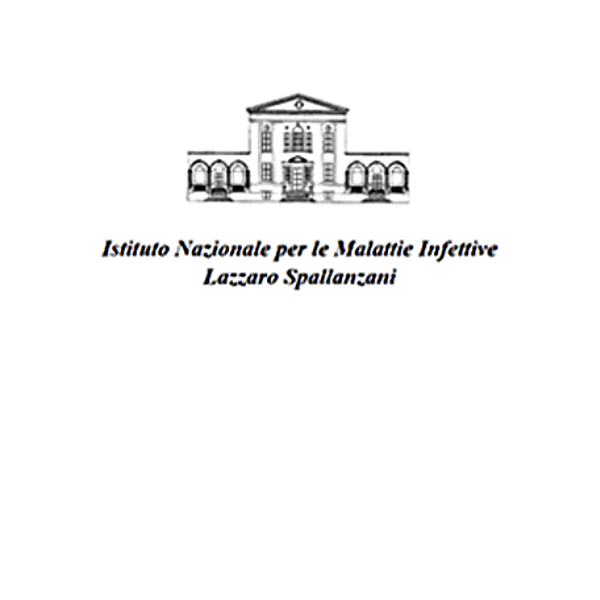
INMI - IT
Core Partner, BSL4, EU
Istituto Nationale malattei infettive L.Spallanzani (INMI) - IRCCS is a public research and care institute dedicated to infectious diseases (IDs) operating since 1936. INMI is recognized as an Italian centre of excellence for the care and treatment of immunocompetent and immunocompromised patients affected by IDs with a special interest in blood-borne infections (including HIV/AIDS and viral hepatitis), emerging and re-emerging infections, high-consequence pathogens, tubercolosis and tropical diseases. The research agenda cover basic, pathogenetic, diagnostic, epidemiologic and prevention research. The mission is to assist in the development of a global response to emerging/re-emerging diseases, including highly contagious microorganisms and help integration between clinical, epidemiological and pre-clinical research, with the aim of enhancing the diagnosis, care and prevention of infectious diseases.
IINMI is the Italian National Referral Centre for ID emergencies and bioterrorism-related pathogens, and is currently engaged in facing and helping to respond to these health threats, whether naturally occurring, newly emergent or deliberately released. Since 2001 INMI is member of the Global Health Security Action Group (GHSAG) and since 2003 of the Global Outbreak Alert and Response Network (GOARN) coordinated by the WHO. Since 2009, INMI belongs to the Emerging and Dangerous Pathogens Laboratory Network (EDPLN) coordinated with GOARN at WHO for laboratory readiness and response. Since 2009, INMI is a WHO Collaborating Centre for clinical care, diagnosis, response and training on Highly Infectious Diseases.
The paradigm of INMI activity is to hold in a strict connection, i.e. in physical proximity, both patient care and laboratory facilities, to have concentrated in one single institution all professional expertise and structures required to complete the cycle of management of patients with IDs and store clinical infectious samples.
The Laboratory of Virology is the largest in Italy focused on basic and clinical research on viral pathogens. The Laboratory of Virology and High Containment Laboratories of level 3 and 4 (BSL-3 and 4) are key actors in the role played by INMI as National Referral Centre for diagnostic of infectious disease emergencies and bioterrorism-related challenges. Main topics, in addition to standard diagnostic activity (serological and molecular tests for blood borne, enterotropic, pneumotropic and neurotropic viruses), is the high level laboratory diagnosis for imported, rare and emerging viral diseases, such as those caused by Filoviruses, VHF-related Arenaviruses, Lymphocytic Choriomeningitis virus, Crimean-Congo Haemorrhagic Fever virus, Smallpox and old world Orthopoxviruses, Hantaviruses, Mers-CoV, Polio1-3, Highly Pathogenic Avian Influenza (HPAI) viruses, flaviviruses, Rift Valley fever virus, Chikungunya virus, phleboviruses, etc..
The Laboratory of Virology is appointed as Regional Reference Centre for advanced molecular diagnostics, screening of virological infections on solid organ donors, virological surveillance of influenza, diagnosis of vector borne viral infections, viral hepatitis transmitted via oro-fecal route, measles, rubella and neurological syndromes of suspected infectious origin. The laboratory team is expert in the design and validation of molecular methods, and in the establishment of EQA panels and wetlab exercises related to the diagnosis of such viruses. INMI is a partner of the European project EVD-LabNet that supports patient diagnostics, surveillance and outbreak response give access to (reference) diagnostics within the network. Dr Capobianchi and Dr Di Caro have a longstanding experience in the study of emerging viral diseases, including, among other topics, characterization of flaviviruses and other emerging arboviruses.
The availability of a biobank is instrumental to maintain the largest collection in Italy of materials related to IDs, including those of high concern, besides cell lines and viral strains, dating back almost 20years. The aim of the biobank is to be an important support for epidemiological, basic and clinical biomedical research. Possible outcomes of such research could be: discovery of new infectious agents or etiological links between known pathogens and human diseases, new insight into the pathogenesis of acute and chronic ID, validating new diagnostic methods or discovering new biomarkers related to the evolution of diseases, evaluating the appearance of resistance to antiviral or antimicrobial therapy, study of new the antivirals and vaccines.